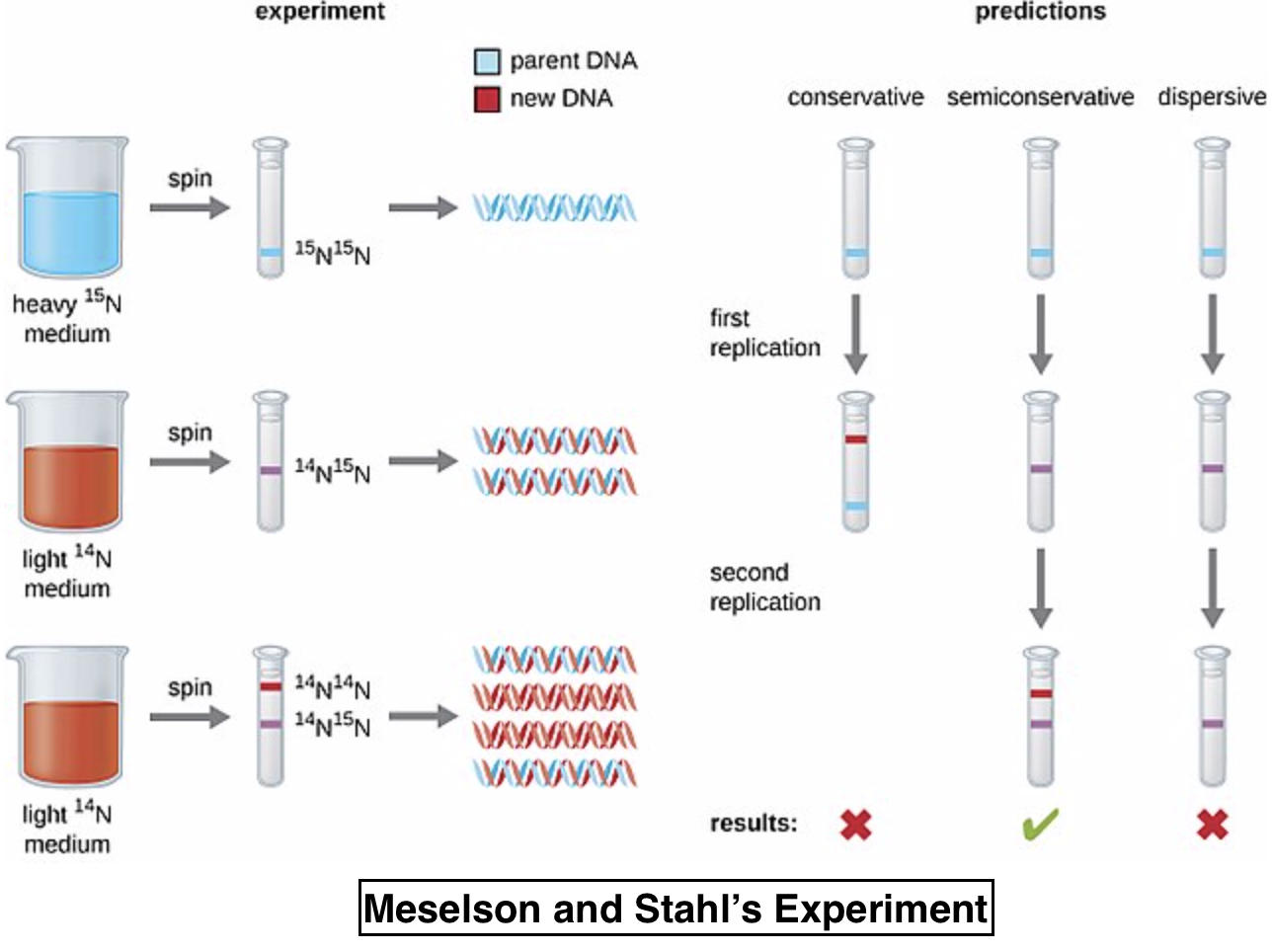
If Meselson and Stahl’s experiment is continued for four generations in bacteria, the ratio of
(a) 1:1:0
(b) 1:4:0
(c) 0:1:3
(d) 0:1:7
Answer
482.4k+ views
1 likes
Hint: The semi-conservative nature of DNA replication was proposed by Watson and Crick but its experimental verification was done by Meselson and Stahl in Escherichia coli using a heavy isotope of nitrogen
Complete Answer:
Watson and Crick explained that the parental DNA strand would act as a template for the formation of a new strand, thus each new DNA strand would have a parental strand along with a newly synthesized strand. This phenomenon was termed as the semi- conservative nature of DNA replication (as half parental DNA was conserved).

Meselson and Stahl’s experiment proving this nature is as follows:
- E.coli was grown in a
- Now, this bacteria was transferred to a plate containing normal
- Centrifugation after each generation of E.coli showed the presence of
- By the time we reach the fourth generation, there will be no parental
- There will be 2 strands having
So, the correct option is ‘0:1:7’.
Note:
- Similar experiments were performed by Taylor in faba beans using radioactive thymine in 1958.
- The centrifuge used had a CsCl density gradient.
- The time required for E.coli to produce a new generation is 20 minutes.
Complete Answer:
Watson and Crick explained that the parental DNA strand would act as a template for the formation of a new strand, thus each new DNA strand would have a parental strand along with a newly synthesized strand. This phenomenon was termed as the semi- conservative nature of DNA replication (as half parental DNA was conserved).

Meselson and Stahl’s experiment proving this nature is as follows:
- E.coli was grown in a
- Now, this bacteria was transferred to a plate containing normal
- Centrifugation after each generation of E.coli showed the presence of
- By the time we reach the fourth generation, there will be no parental
- There will be 2 strands having
So, the correct option is ‘0:1:7’.
Note:
- Similar experiments were performed by Taylor in faba beans using radioactive thymine in 1958.
- The centrifuge used had a CsCl density gradient.
- The time required for E.coli to produce a new generation is 20 minutes.
Recently Updated Pages
Master Class 9 General Knowledge: Engaging Questions & Answers for Success

Master Class 9 English: Engaging Questions & Answers for Success

Master Class 9 Science: Engaging Questions & Answers for Success

Master Class 9 Social Science: Engaging Questions & Answers for Success

Master Class 9 Maths: Engaging Questions & Answers for Success

Class 9 Question and Answer - Your Ultimate Solutions Guide

Trending doubts
Give 10 examples of unisexual and bisexual flowers

Draw a labelled sketch of the human eye class 12 physics CBSE

Differentiate between homogeneous and heterogeneous class 12 chemistry CBSE

Differentiate between insitu conservation and exsitu class 12 biology CBSE

What are the major means of transport Explain each class 12 social science CBSE

a Tabulate the differences in the characteristics of class 12 chemistry CBSE




